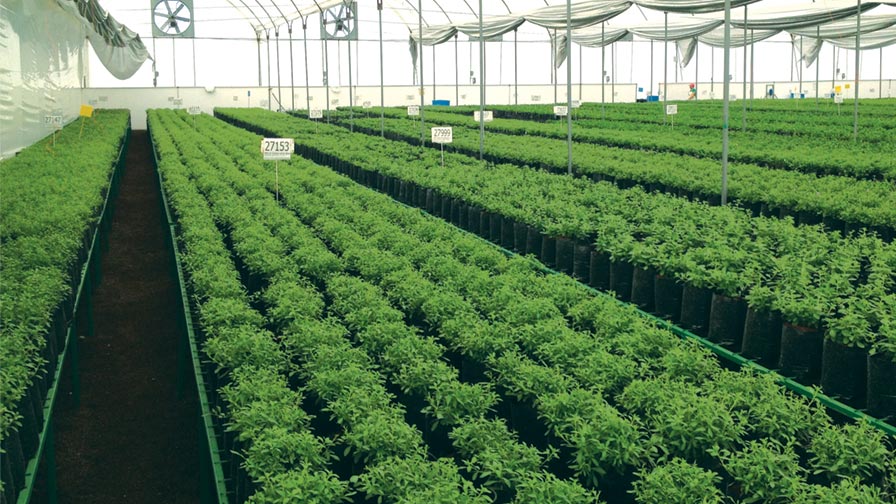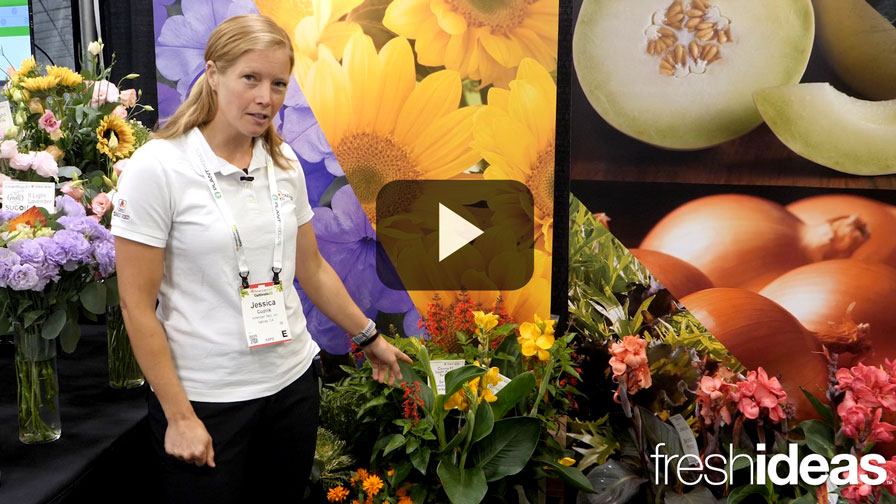Tips on Successful Handling and Propagation of Cuttings
 Various factors play into the successful propagation of unrooted cuttings (URCs), according to floriculture expert John Dole, interim dean for the College of Agriculture and Life Sciences at North Carolina State University.
Various factors play into the successful propagation of unrooted cuttings (URCs), according to floriculture expert John Dole, interim dean for the College of Agriculture and Life Sciences at North Carolina State University.
In a Jan. 11 webinar hosted by the American Floral Endowment, Dr. Dole shared his insights on factors that affect propagation, including sanitation, training, temperature, time, and handling. The five stages for efficient rooting are prior to arrival, arrival and sticking, callusing, root development, and toning.
Sanitation is a key factor prior to the arrival of the unrooted cuttings. Many areas must be kept clean, Dr. Dole said, including the cooler, bench top, under the bench, trays, and equipment. Employees must keep their hands and clothing clean, as well.
“Under the bench, we often forget that. It’s not really obvious,” he said. “Are there leaves growing under there? Are there diseases?”
The importance of training cannot be overstated, Dr. Dole said, noting that training “is ongoing and requires commitment.” Employees should be trained in unboxing, sorting, accessing quality, processing, prioritizing, sticking, and scouting.
“The no. 1 take home message is maximizing the performance of unrooted cuttings as a measure of time versus temperature,” he said.
Dr. Dole listed plans A-D to handle URCs upon arrival. Growers may A) stick them immediately, B) hold them in a cooler for less than 24 hours, C) hold the cuttings on a propagation bench for less than 24 hours, or D) store the cuttings for more than 24 hours.
The number of hours between arrival and sticking makes a difference, Dr. Dole said, especially for poor shippers and storers, like sweet potatoes. Some species and cultivars are harder to root than others, such as lavender.
Plan B allows for cuttings to be stored in a cooler prior to sticking for less than 24 hours. A temperature of 50℉ works for almost everything, he said. Temperatures between 35℉ and 40℉ have benefits for cold-tolerant species, such as geraniums and petunias. Several tropical plants prefer 55℉ because damage can occur at 50℉.
“When we unpack the boxes, we want to check and see where the boxes are at in terms of temperature,” Dr. Dole said. “That will dictate how we handle those boxes.”
An infrared thermometer gun or temperature probe may be used to check the temperature. If the temperature if more than 70℉, the URCs should be removed from the box to cool as soon as possible.
If the temperature is between 60℉ and 70℉, the shipping time is normal (48 hours), and the URCs will be stuck on the day of arrival, boxes can be placed into the cooler. If the temperature is between 60℉ and 70℉ but the shipment is delayed or the URCs will be stuck the following day, the URCs should be removed from the boxes and placed into the cooler. With a temperature between 50℉ and 60℉, the boxes can be placed directly into the cooler, Dr. Dole said.
Plan C involves holding the cuttings on the prop bench. The light offers potential benefits, including photosynthesis if the stomata are open. To avoid drought stress and heat, Dr. Dole said growers should turn off the bottom heat and turn on the mist. Plan D, which would store cuttings for more than 24 hours, is not recommended. Some species, however, store well if the temperature control is ideal, including chrysanthemum and New Guinea impatiens.
“The performance is closely related to the sum of the temperatures experienced from cut to stick,” Dr. Dole said.
Different plants also have unique temperature sensitivities. For example, poinsettias are moderately cold sensitive and sweet potatoes are very cold sensitive. Red geraniums are moderately warm sensitive and non-red geraniums are very warm sensitive, he explained.
Dr. Dole offered several tips for sticking and handling. He advised to take only the number of cuttings into the greenhouse that can be stuck in an hour. Crew leaders should be aware of upcoming work breaks, when the cuttings could be left to heat up in the sunlight. Cuttings should be kept out of direct sunlight while waiting to stick.
Excessive shipping or storage delays can result in moisture loss, high respiration, and pathogen development. Visible symptoms include yellowing, necrosis, disease, and slow or uneven rooting, Dr. Dole said.
“That leaves us with a question. We have cuttings that have been delayed,” he said. “Do we go ahead and propagate them and thus run the risk of having poor quality, and maybe even rooted cuttings that we can’t use? Or do we replace them, ask for credits, and then have missed schedules?”
Dr. Dole and Jim Faust of Clemson University experimented with various recovery solutions after shipping. The compounds tested included wetting agents, rooting hormones, fungicides, carbohydrates, and cytokinins. The study included two colors of New Guinea impatiens, geraniums, and poinsettias. The various storage times were zero, four, and eight days in the first set of experiments and until wilted in later experiments. Some cuttings were dipped for 30 minutes, while the control group was either undipped or dipped in distilled water.
Cuttings dipped in distilled water were turgid but still flexible, Dr. Dole said. Cuttings dipped in CapSil or another wetting agent were “very turgid” and “easy to stick,” he said. A further experiment studied the treatments and storage duration.
In summary, CapSil improved the turgor, allowing the cuttings to be stuck more easily. Positive results occurred with unstored cuttings, as well. By allowing the cuttings to wilt, plug quality is reduced, Dr. Dole said. The zero-minute dip produced slightly less rooting than the 30-minute dip. All the K-IBA solutions used in the experiment were successful with the New Guinea impatiens. For geraniums and poinsettias, K-IBA, plus either fructose or Pageant were successful, according to Dr. Dole.
He recommended that growers test the results for themselves to see how it works for their operation.
Click here to watch the entire presentation.









